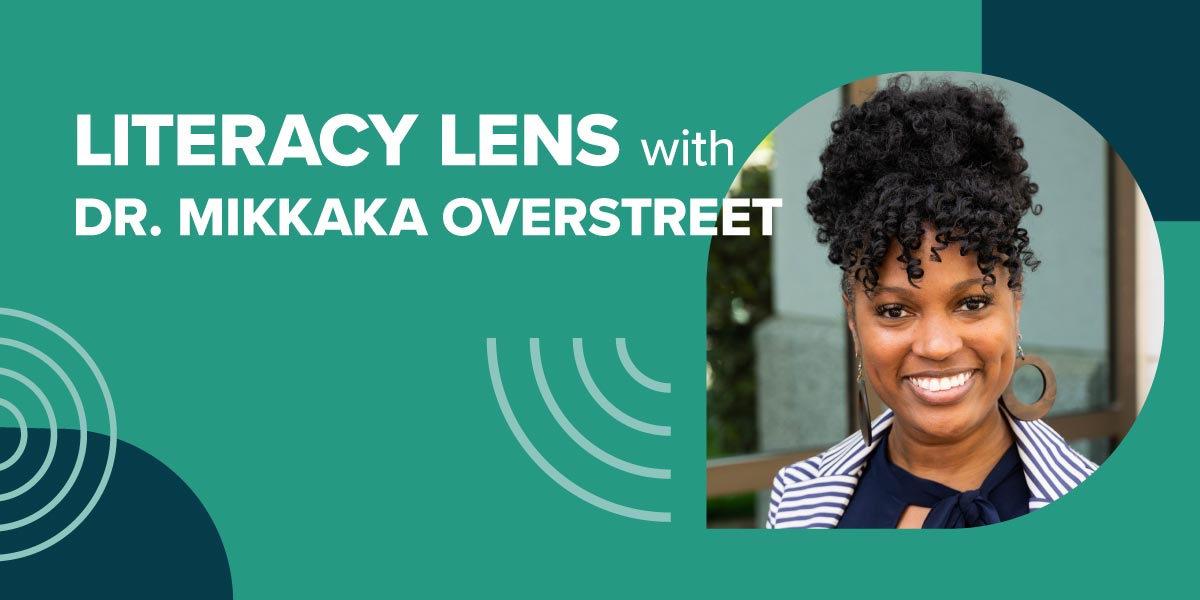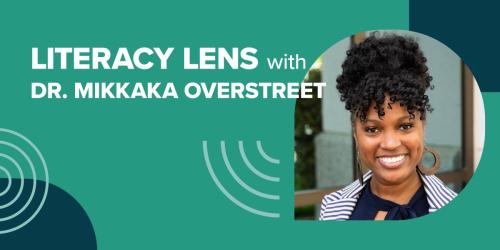Literacy Lens: The Enduring Challenge of Diversifying the Teacher Pipeline

Literacy, like any aspect of education, cannot be separated from equity. At Education Northwest, we believe that literacy is a human right and access to quality literacy education is a civil right. But all students don’t have equal opportunity and access in our education system. Despite some gains, students from historically marginalized and underrepresented populations continue to underperform on national assessments compared to their white peers.
The discrepancy in the diversity of the U.S. student and teacher populations is one factor contributing to these systemic disparities. As of the 2017–18 school year, 50 percent of students, but only about 20 percent of teachers, are people of color.
All Students Benefit from a Diverse Teacher Workforce
Diversifying the teaching workforce is key to improving outcomes for all students and promoting more equitable opportunities for students of color. A diverse teaching workforce benefits students by bringing distinctive knowledge, experiences, and role modeling to the classroom. One study of student perceptions indicated students of all races rated Black and Latinx teachers more favorably than white teachers. According to a Learning Policy Institute report, students of all backgrounds report feeling cared for and academically challenged by teachers of color.
The benefits for students of color are even more striking, according to the Learning Policy Institute report. Students of color demonstrate greater academic achievement and social and emotional development in classes with teachers of color. For example, one study found that Black elementary students with Black teachers scored three to six percentile points higher on reading and math tests than students without Black teachers. These gains accumulated each year students were in a class with a race-matched teacher. Black students who were assigned to a class with a Black teacher at least once during the intermediate grades were less likely to drop out of high school and more likely to apply for college. Furthermore, a 2016 Department of Education report indicates that racially and ethnically diverse teacher candidates tend to have higher expectations for students of color, to use exclusionary disciplinary practices less frequently, and to more regularly employ culturally relevant teaching practices that have been linked to higher academic outcomes for students of color.
Teachers of color are more likely to seek employment in high-poverty, hard-to-staff schools, filling a need that impacts our most vulnerable students. The Learning Policy Institute reports that nationally, three out of four teachers of color work in the quartile of schools serving the most students of color. In a time of unprecedented teacher shortages, it is imperative that we recruit and retain teachers willing to support these underserved communities.
How to Recruit and Retain Teachers of Color According to BIPOC Teacher Candidates
Recently, I had the pleasure of facilitating a panel discussion at Education Northwest with several Black students in their junior and senior years of teacher education programs. The students attend both predominantly white institutions and historically Black colleges and universities (HBCUs). These teacher candidates’ insights are invaluable, as teacher preparation programs are vital parts of the educator pipeline that provide rich and crucial contexts for analyzing recruitment and retention efforts.
Protect the Profession
The problem of recruiting and retaining BIPOC teachers is complex and multifaceted. Prominent issues within the profession—such as how teachers are treated and paid—often discourage people from considering it a viable career option.
I think that if we protected the profession more, people would not be as frustrated or as dismissive of the idea of going into education.
—Kendrick Mason-Wiggins, Virginia State University
“I think that if we protected the profession more, people would not be as frustrated or as dismissive of the idea of going into education,” said Kendrick Mason-Wiggins, a second-grade teacher and student in Virginia State University’s teacher residency program, Hybrid Education Residency Opportunity (HERO). “Everywhere you turn, teachers are talking about how frustrated they are. There are whole organizations dedicated to the teacher exodus ... I think that anything that's as bashed as this noble profession is going to suffer a loss of interest. Right? We don't tell the successes. We don't share the benefits as well as we do the pitfalls! And I think for that reason we lose a lot of students.”
Advocate for Students
The effects of institutional racism, sexism, and other “isms” also limit the ability of students of color to see themselves as teachers. When they do pursue education these factors add to the challenges of persisting in the field.
Kayla Batts, senior in Virginia State’s elementary education program, had never had a Black teacher before coming to the HBCU. Still, she had encountered teachers who made her want to pursue a teaching career.
“I'm in a very white town, so it was like there was no one that looked like me in my school that really just fought for us,” said Batts. “But two teachers, Miss Dunford and Miss Johnson, they really fought for me and my sister, and I was like, you know what? I wanna do that for somebody.”
Mason-Wiggins agreed. “I think if we got kids to enjoy, or if we got educators who were willing to do the work to help kids enjoy school, that would change the pipeline as a whole.”
Identify Candidates Early
Research suggests that to counteract the many factors discouraging people of color from entering the teaching field, we must take a multifaceted approach to recruitment and retention efforts throughout the entire pipeline. This starts with early identification—teachers encouraging students to see teaching as a career as early as elementary and middle school, and ensuring they have positive school experiences.
My first thought is just changing the experience of their time from kindergarten through twelfth grade. I think creating a positive impact … during that time is so influential.
—Jayden Mandeville, Southern Oregon University
“My first thought is just changing the experience of their time from kindergarten through twelfth grade,” said Jayden Mandeville, senior in Southern Oregon University’s education studies program. “I think creating a positive impact, creating that exposure during that time is so influential. If you have a child that hates school during that period of time, they're not going to want to go back for their career. So those beginning years are very influential on what you do, how you react, and what you expose them to.”
Support Future Educators
Students on the panel also agreed with the research suggesting that there needs to be more robust support for teacher candidates, including mentoring, counseling, and tutoring. Batts attributes her persistence in her program to the support she gets from the faculty and staff members at Virginia State.
Our department chairs, our professors, our advisors … They want us to succeed. Just having that additional support, it's really what keeps me going.
—Kayla Batts, Virginia State University
“Our department, we are like a mini family of its own, inside our HBCU family. Our department is very small. And it's so welcoming. Our department chairs, our professors, our advisors. They really do cater to us. You know, you may have to make a couple of phone calls, a couple of emails, but they really are like your home, your parents away from home. They want us to succeed. Just having that additional support, it's really what keeps me going, ‘cause being so far from home, it is hard just to keep going just to see it through.”
These efforts can’t stop after graduation, either. To retain BIPOC educators, districts must provide better support to in-service teachers. This includes mentoring and networking, improved working environments, administrative support, and opportunities for advancement.
Call to Action: Support BIPOC Teachers, Teacher Candidates, and Students
Educators of color are lost at multiple points in the pipeline to a teaching career, so there is much to be done at all levels and by all interested parties. According to the Department of Education report, “more must be done, starting with preparation and completion, to recruitment and selection, and then placement and retention” to meaningfully increase diversity in the teacher workforce. What can YOU do in your context to make education a safer, more viable, and appealing field for everyone?
Creating Networks to Improve Teacher Recruitment and Retention: The Role of Education Northwest
For districts and schools hit hard by teacher shortages, there's only so much you can do alone in hiring and keeping high-quality teachers.
Resources for Recruiting, Hiring and Retaining Teachers of Color
With a growing body of research showing the positive impact of diverse teachers on student outcomes, what does the research say on strategies for hiring more teachers of color?
Exploring the Lived Experiences of Superintendents of Color in Oregon
Explore a 2022 report on the lived experiences of superintendents of color in Oregon.
How Teachers of Color Can Make a Difference in the Classroom and Beyond
Hiring more teachers of color benefits all students academically and builds the school community—and it's the right thing to do.
Literacy Lens: Black Educators Matter
Students benefit from having teachers that reflect their cultural background. But while nearly 50 percent of U.S. students are people of color, only about 20 percent of teachers are.



